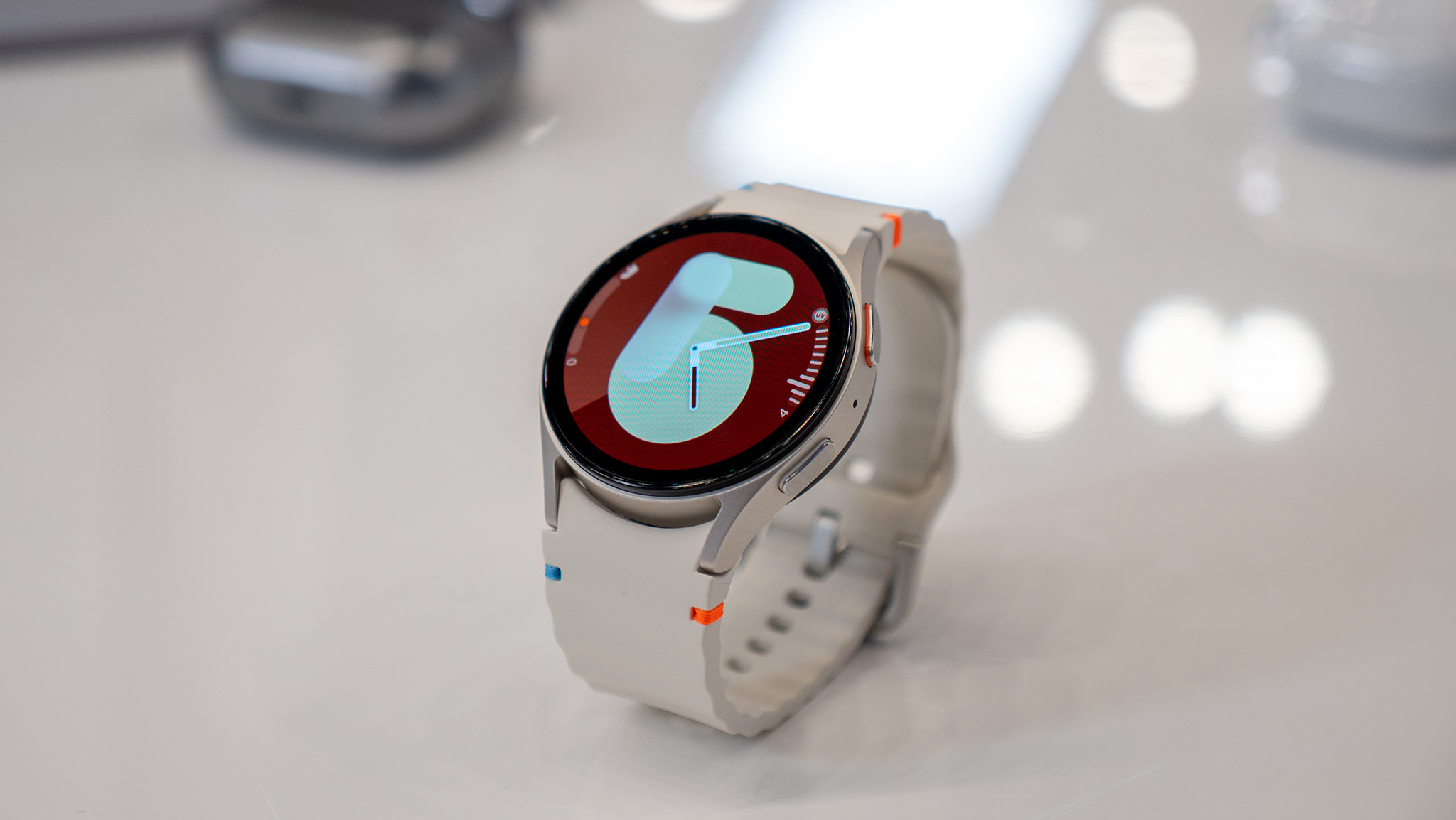
The Samsung Galaxy Watch 7 is the ideal Android smartwatch for most people, particularly Galaxy phone owners. But we're a few months out from the next Galaxy Unpacked, and Galaxy Watch 8 leaks have already begun; now you have to decide whether to snag a Watch 7 deal or stay patient.
Our Galaxy Watch 7 review commends the consistently good quality that Samsung has delivered over the last few years, with a few tweaks like gestures, dual-band GPS, and new health sensors to keep things interesting.
This Galaxy Watch 7 guide will focus more on specs and your buying decision. We'll break down how the Watch 7 beats the Galaxy Watch 6 or Watch FE, as well as how it matches up against the pricier Galaxy Watch Ultra. We'll compare it against other Wear OS watches like the Pixel Watch 3.
Should you wait for the Galaxy Watch 8 or grab a Watch 7 now? Let's dive into all the most important details and decide.
Samsung Galaxy Watch 7: Price, availability, and models
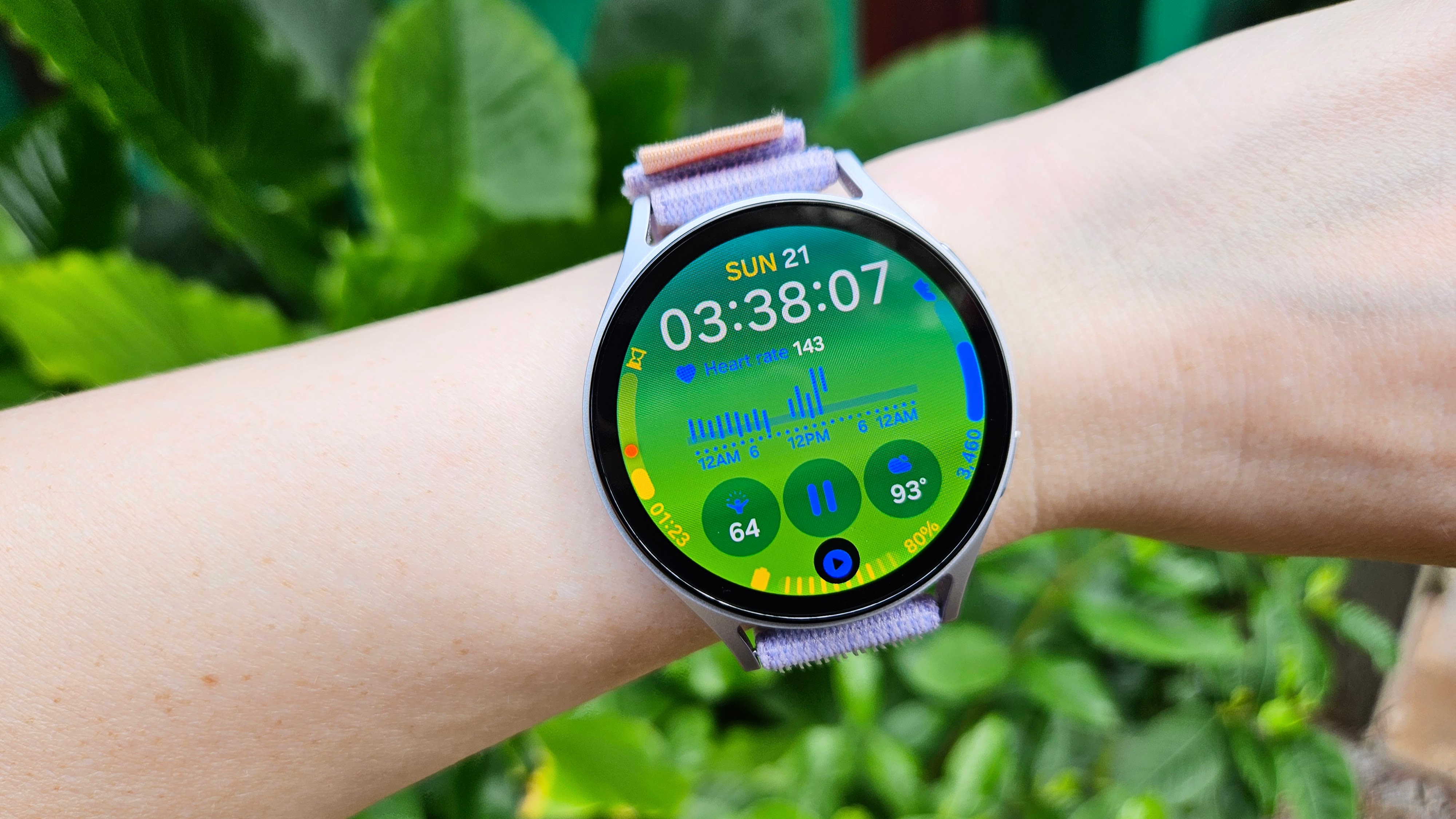
The Samsung Galaxy Watch 7 was announced on July 10, 2024, and shipped to customers on July 24; you can order it from Samsung.com, Amazon, Best Buy, and select U.S. carriers.
The Galaxy Watch 7 kept the Watch 6's price after two straight years of increases. The 40mm Watch 7 costs $299 / £289 / €319 / CA$409 / A$599 / ₹29,999; the 44mm Watch 7 costs $329 / £319 / €349 / CA$449 / A$599 / ₹32,999. Samsung lets you upgrade either version to add 4G LTE support for $50 extra (plus whatever monthly fee you'll pay your carrier).
Samsung and its retailers frequently run discounts on the Galaxy Watch 7, including bundled deals with the Galaxy S25 or offering a second band for free with purchase. Aside from retailer deals, you can buy a Watch 7 from Samsung.com and trade in "any smartwatch, any condition" for $100 off, while you can get up to $200 off with certain Samsung or Apple watches.
Otherwise, we regularly see the Galaxy Watch 7 available in the low-$200s on Amazon and other tech retailers, if you don't have a watch to trade in.
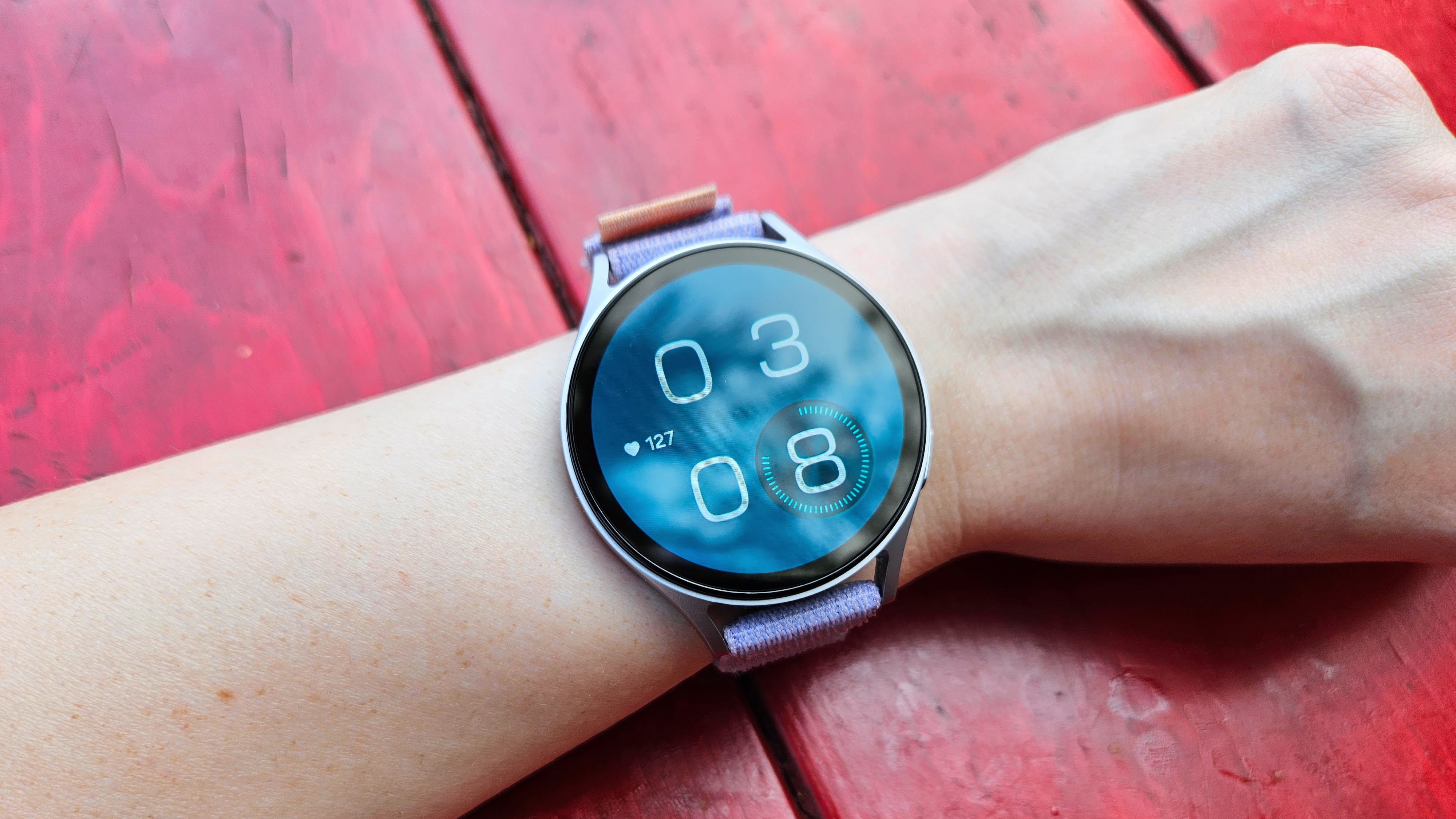
The Galaxy Watch 7 is available in three colors, but not all size variations come in the same colors. The 40mm Watch 7 also has a Cream option, while the 44mm Watch 7 has a Silver option. Meanwhile, both sizes ship in Green. You can choose a Sport, Fabric, or Athleisure watch band as your default option. There's a healthy assortment of bands available for the Watch 7 from both first and third-party sellers.
Samsung and Google recently announced Galaxy Watch for Kids, a new software version that converts the Galaxy Watch 7 LTE into a kids' smartwatch with parental controls, location tracking, unique educational apps, and calling/ messaging without a smartphone. You can buy the "normal" Watch 7 LTE and set it up for your child as a standalone device, as long as you have a Galaxy phone.
We recently read a scientific study that fluoroelastomer bands may have harmful chemicals like PFAS in them, though it's unclear whether or not they actually transfer from the band to your skin. You may want to choose an alternative to the rubber Sport option, if you're at all concerned.
Samsung Galaxy Watch 7: Specs and sensors
The Exynos W1000 is Samsung's first 3-nanometer CPU used in a smartwatch, built with five cores instead of the usual dual-core design: one Arm Cortex-A78 and four Cortex-A55 clocked at 1.6GHz. Samsung promises it loads apps 2.7x faster than the Exynos W930 in the Galaxy Watch 6, while outperforming it in single-core and multicore benchmarks by "3.4x and 3.7x, respectively."
Samsung told us that much of that extra processing power goes into the revamped health sensor array. Although the Galaxy Watch 7 tracks the exact same data as the Galaxy Watch 5 or Watch 6, the bottom sensor has 13 LEDs for heart rate and blood oxygen readings instead of four LEDs. Samsung says this new "multi-optical path" gives the Watch 7 94% accuracy during high-intensity workouts, compared to 88% on the last generation.
Our Galaxy Watch Ultra fitness test showed real-world improvements in heart rate accuracy during workouts, and the Galaxy Watch 7 has the same sensor array, so this health & fitness reliability applies to both watches.
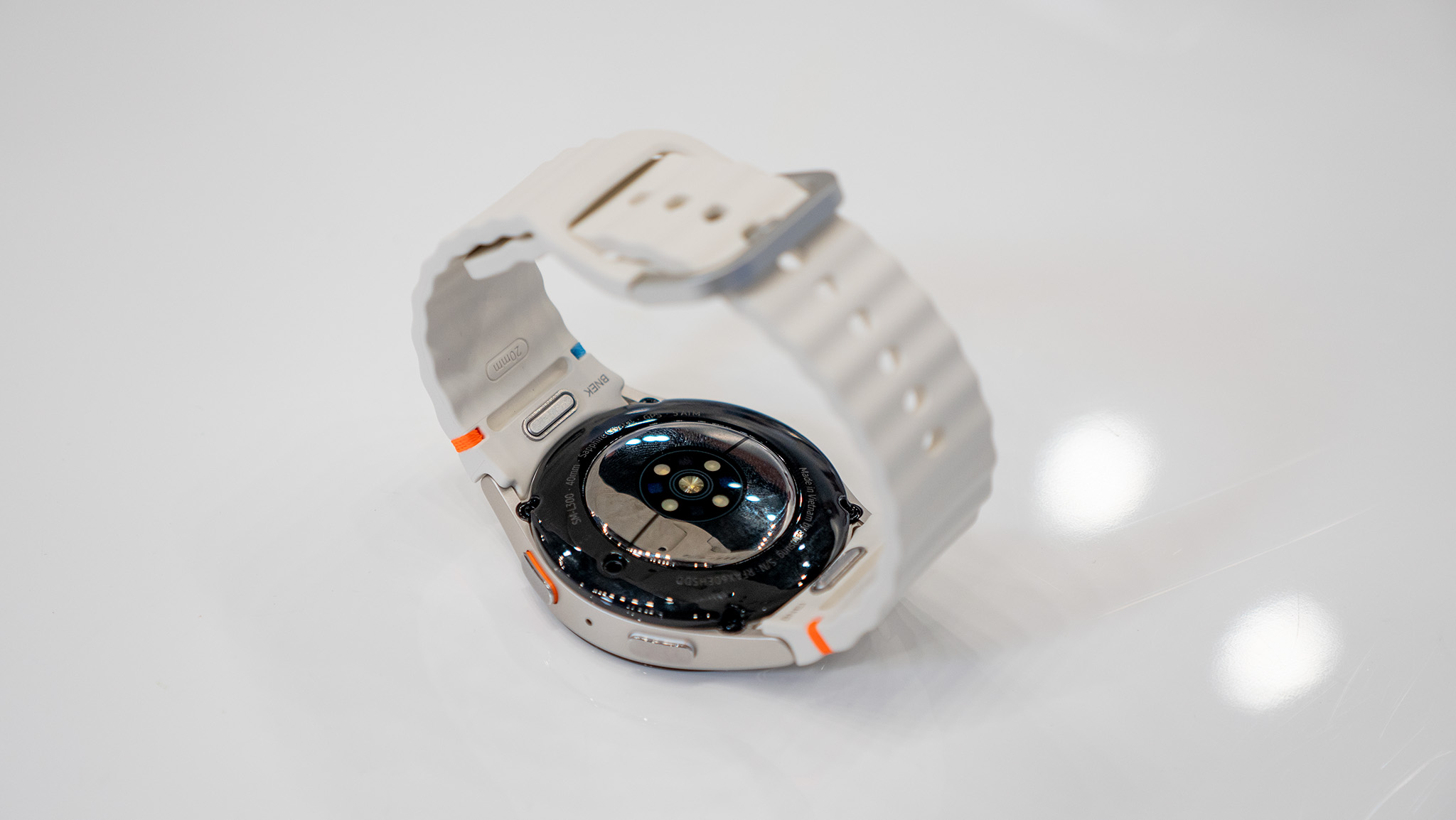
Most smartwatches have red, green, and infrared LEDs for capturing your health data, but Samsung added blue, yellow, violet, and ultraviolet LEDs to the Galaxy Watch 7 to "pursue unexplored aspects of health monitoring on wearables." The Watch 7 and Ultra launched with an experimental metric called AGEs Index that Samsung says is "one of the many new advanced features planned" with these LEDs.
Unfortunately, the new metric isn't especially useful — we found that Samsung gave everyone near-identical AGEs Index scores regardless of differences in health — and we don't know what to expect from future health metrics yet.
A more exciting upgrade is dual-band GPS, which triangulates your position from multiple satellite angles to avoid obstacles like buildings, foliage, or mountains. It's vital for accurate outdoor workout results, and it's rare to find in affordable smartwatches. Thankfully, this new GPS performed excellently in our fitness test, living up to Samsung's promises.
Samsung also gave the Galaxy Watch 7 32GB of storage. That might sound like overkill, but we noticed that the Galaxy Watch 6's 16GB of storage was closer to 6GB thanks to the default OS. With extra storage, you'll have plenty of space for large music playlists or podcasts, if you like to leave your phone at home during walks or workouts. It also leaves room for all the best Wear OS apps you could want.
One UI 6 Watch (Wear OS 5) key features

All of the recent Galaxy Watches have One UI 6 Watch; while this software is based on Wear OS 5, it has differences from the stock software on a Pixel Watch 3.
The Galaxy Watch 7 offers an Energy Score, calculated by Galaxy AI algorithms based on your recent sleep, stress, and activity data, indicating if your poor sleep or hard activities are impacting your body and tracking new metrics like movement during sleep or sleep latency.
Galaxy AI also takes your Watch 7 data and generates wellness tips for how to improve your health, tracking specific metrics like your resting heart rate over time to help you judge your progress. Plus, the Watch 7 has FDA-approved sleep apnea detection.
Another new Galaxy AI feature is AI-powered suggested replies, making it potentially easier to respond to your Google or Samsung Messages without having to pull out your phone or type on the small QWERTY keyboard. You'll need a Galaxy phone to use these, however.
As for upcoming One UI Watch updates, the recent Galaxy Unpacked 2025 event previewed new Samsung Health AI tools that will come to the Galaxy Watch 7 later this year with Wear OS 6: a health coach AI, a "vascular load" metric for judging heart health and fitness, mindfulness check-ins, tailored meal plans based on your "antioxidant index," and more.
We've heard that Google is working on Gemini on Wear OS to replace Google Assistant and an adaptive charging feature, so those should also port to the Galaxy Watch 7 at some point. We're also curious whether Google's new quarterly update strategy on Wear OS will factor into future Galaxy Watch updates or if we'll have to wait until the summer or fall to see new features.
Galaxy Watch 7 vs. Watch 6
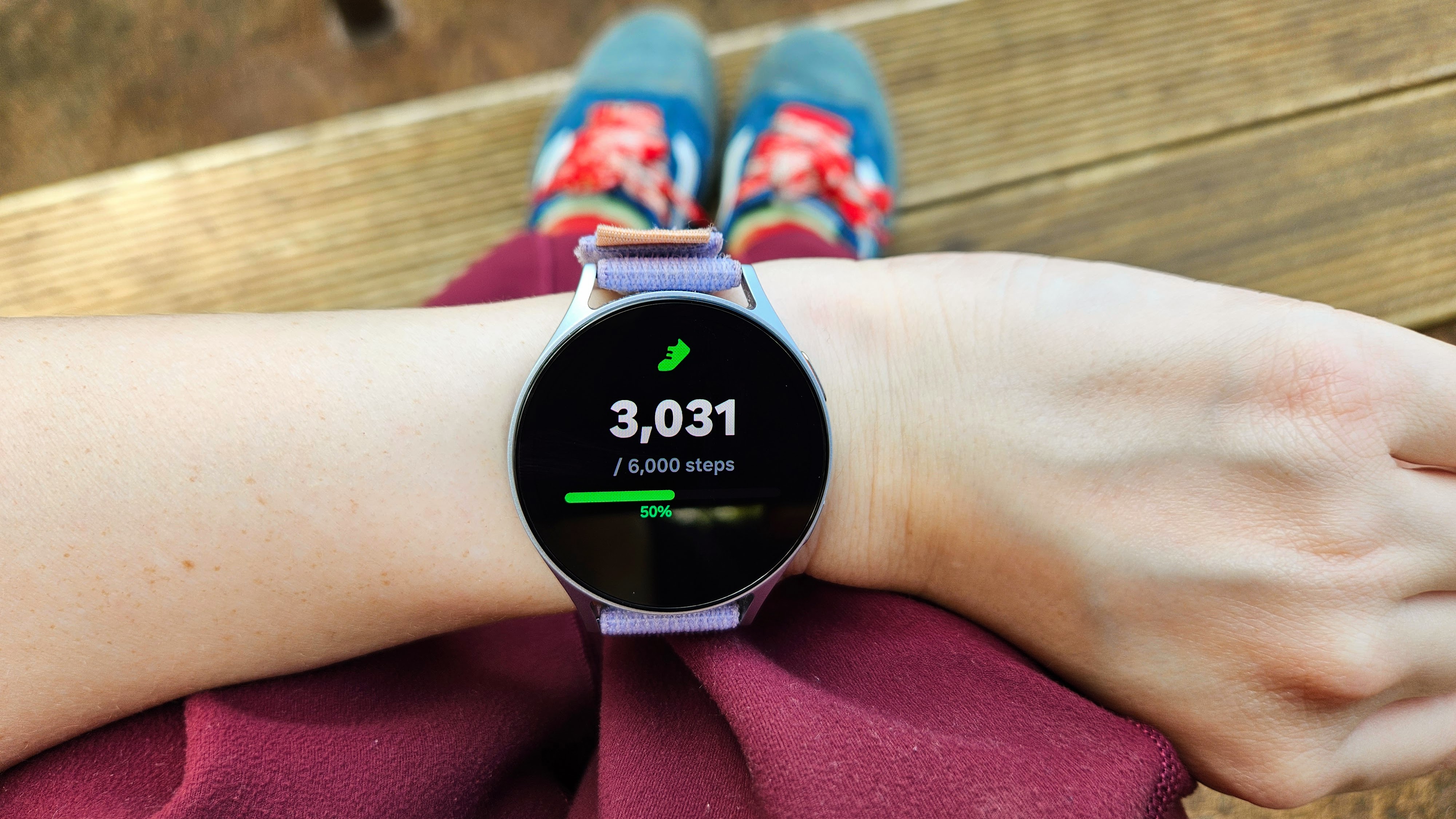
Before we highlight the Galaxy Watch 7 vs. 6 differences, let's look briefly at what's the same:
- Both ship with 1.3- and 1.5-inch displays and the same resolutions
- Memory (2GB)
- Battery capacity (300/425mAh)
- Health sensors (HR, SpO2, ECG, skin temp, BIA)
- Connectivity (Bluetooth 5.3, NFC, WiFi, optional LTE)
- Protection (Sapphire Glass, IP68, MIL-STD-810H)
As for the biggest changes, we've already noted how the new Exynos W1000 beats the Exynos W930. However, our Galaxy Watch 7 reviewer noted that, while "this is the zippiest smartwatch I've ever used," she's "not seeing" the 2.7x boost over the Galaxy Watch 6 that Samsung promises. "In the day-to-day, it's faster, but not noticeably."
We think the Exynos W1000's biggest impact is its efficiency; despite having the same battery capacity as the Watch 6, the Watch 7 consistently lasts about two days per charge, while the Watch 6 falls closer to 1 to 1.5 days. We suspect the Watch 7 will stand the test of time a little better.
As we said above, the Galaxy Watch 7 delivers more accurate heart rate and GPS results. Our Galaxy Watch 6 fitness test disappointed us, so we welcomed these upgrades, but if you're not much of an athlete or just don't need exact results, then you don't necessarily need the Galaxy Watch 7.
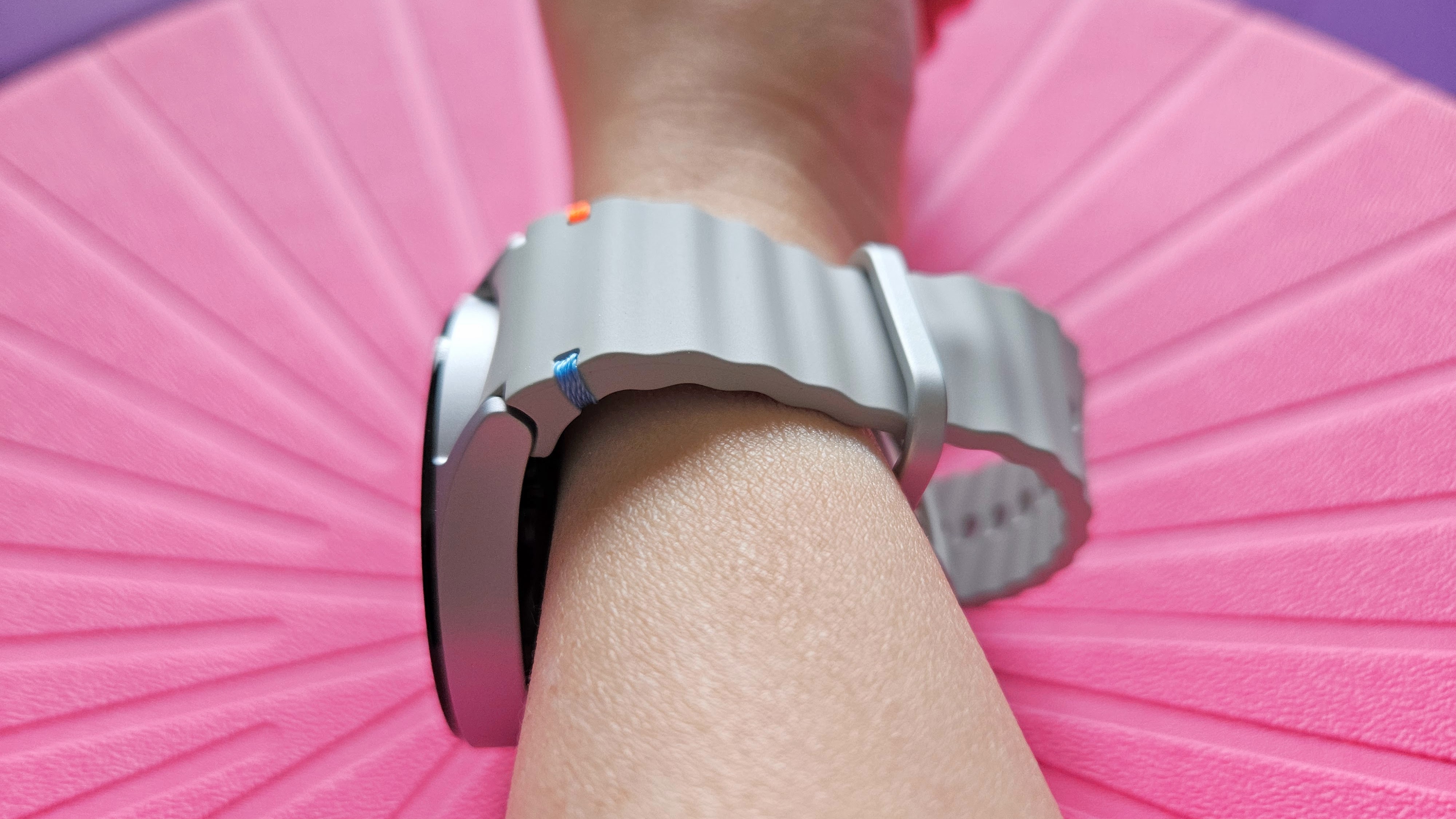
The Galaxy Watch 7 launched with Wear OS 5 and the One UI 6 Watch skin and will get consistent software updates through Summer 2028. The official Wear OS 5 rollout began on November 19 for the Galaxy Watch 6 series, with older models receiving it by early December.
As mentioned above, the Galaxy Watch 7 has more HR LEDs and LED colors than the Watch 6. Although Samsung's first use of these sensors — the AGEs Index — didn't impress us, their team has promised future health metrics using this data, which the Galaxy Watch 6 won't be able to access. It's a vague reason to upgrade, but still worth mentioning.
The Watch 6 and 7 have nearly identical weights—the Watch 7 40mm and 44mm weigh 0.1g and 0.5g less, respectively—but Samsung notes that the newer watch is 0.7mm thicker, and its measurement doesn't include the sensor array. The extra LEDs make the Watch 7 sensor bump more dome-like, so it "sits slightly higher on your wrist" than the Watch 6, according to our reviewer.
As a side note, if you're a Galaxy Watch 5 owner, the upgrades will be even more substantial. Comparing the Galaxy Watch 6 vs. 5, the 2022 watch has an even older Exynos chip, less RAM, smaller battery capacity, and smaller displays with a thicker border. The Galaxy Watch 7 will feel like an even more substantial upgrade if you're two generations behind.
Plus, we have a new guide on the Galaxy Watch 7 vs. Watch FE if you're considering the cheaper Fan Edition model, which shares several traits with the Watch 5 and 4.
Galaxy Watch 7 vs. Watch Ultra
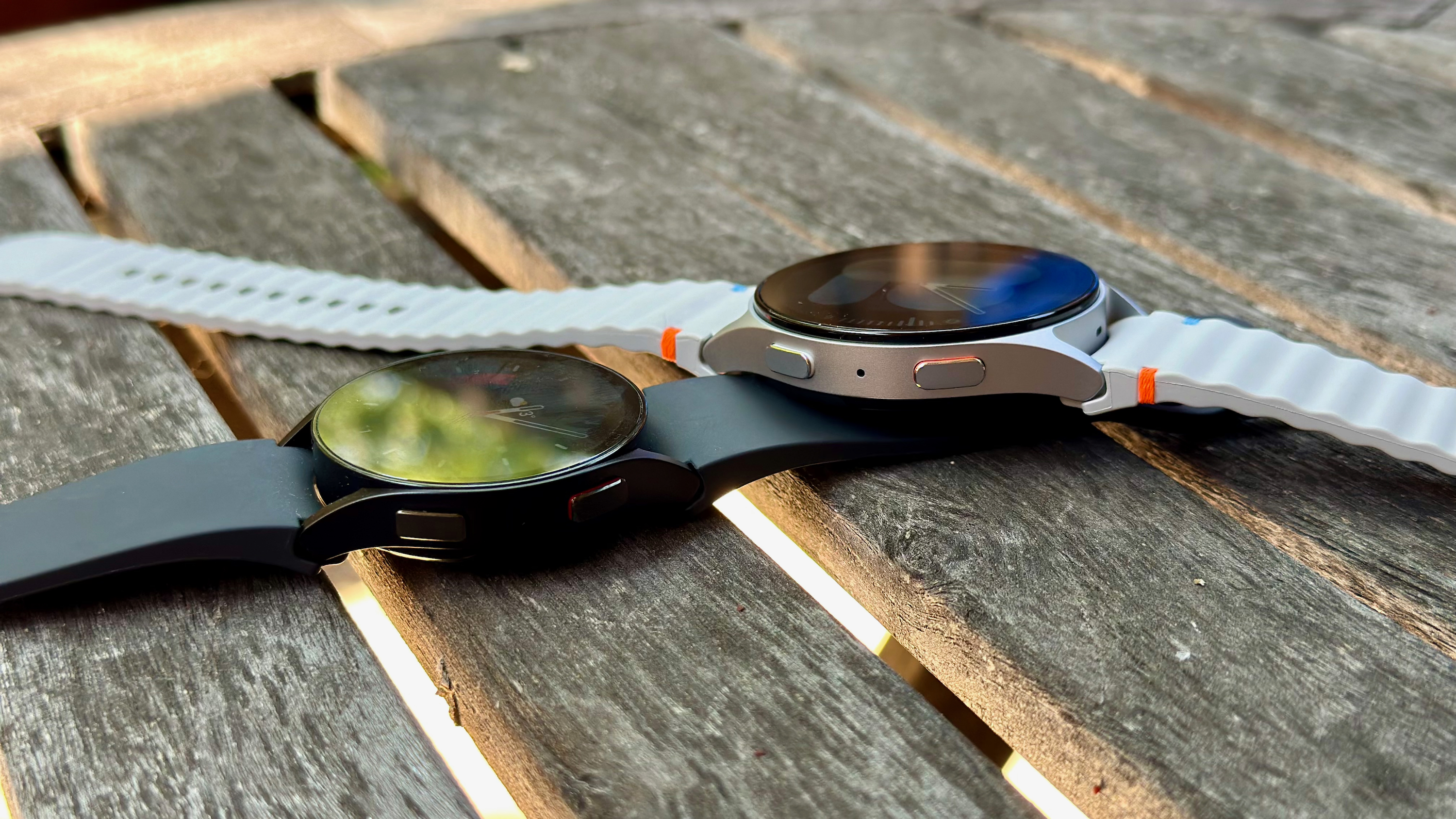
Despite the $350 price gap between the Galaxy Watch 7 and Galaxy Watch Ultra, the two watches aren't all that different, aside from the obvious design differences. You can read our dedicated Galaxy Watch 7 vs. Ultra guide, but we'll break down the main differences below.
The Watch 7 Ultra uses titanium grade 4 instead of aluminum, with a 47mm case that weighs 60.5g without the strap (26.7g more than the larger Watch 7). It feels significantly heavier and measures 2.4mm thicker; while you can wear the Galaxy Watch 7 for sleep tracking relatively comfortably, that may not apply to the hefty Watch Ultra.
Both the Galaxy Watch Ultra and Watch 7 44mm have 1.5-inch, 480x480 AMOLED displays, so there's no visual upgrade except for a brightness boost from 2,000 to 3,000 nits on the flagship watch. To be fair, the Ultra looks fantastically vivid in direct sunlight, while the Watch 7 is more functional.
Like the Watch 7, the Watch Ultra has a digital bezel along the display edge. Unfortunately, while the Ultra's side button is a crown, it's inactive so you can't scroll through menus. On the other hand, the Quick Button lets you pause and restart workouts quickly instead of having to swipe through menus with sweaty fingertips.
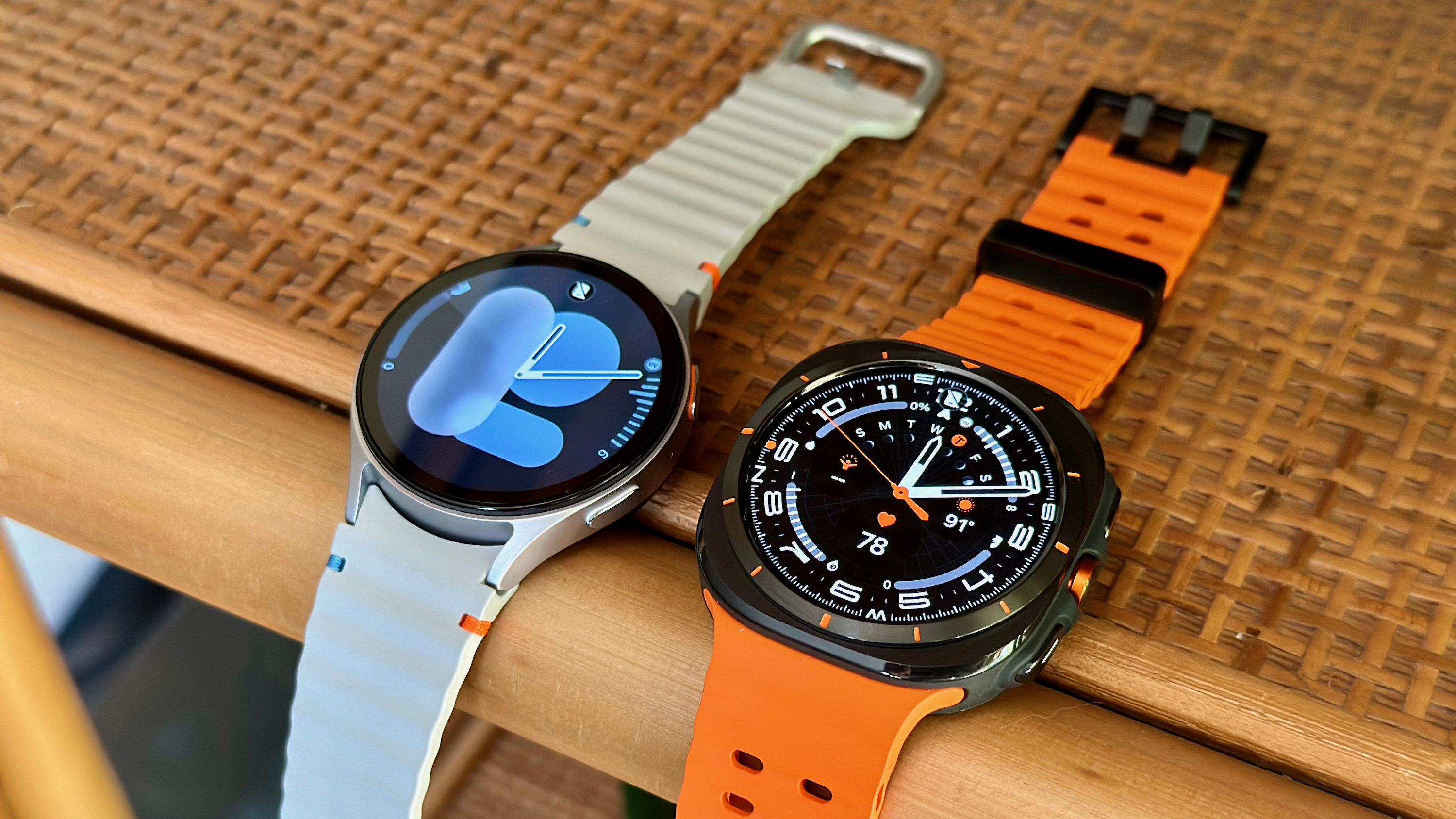
The Galaxy Watch Ultra has the same 590mAh battery as the Watch 5 Pro, or 165mAh extra capacity compared to the Watch 7 44mm. On paper, Samsung says the Ultra lasts 60 hours with AOD, which is longer than the Watch 7 lasts without AOD. If battery life is a serious concern for you, the Ultra is the clear choice.
Like the Watch 7, it has 2GB/32GB memory and an Exynos W1000 CPU, plus the same sensors. The upgraded LEDs and dual-band GPS are the same, too. The Galaxy Watch Ultra has LTE capabilities built in, while you must pay extra for it on the Watch 7.
Mainly, you're paying for some serious ruggedness. The Galaxy Watch Ultra passes the ISO22810 diving standard for 10 minutes in water at 100-meter depth. It has an 85-decibel siren and Samsung promises that it can survive elevations up to 29,527 feet or temperatures between -4°F and 131°F (-20ºC to 55ºC).
Should you buy the Samsung Galaxy Watch 7?
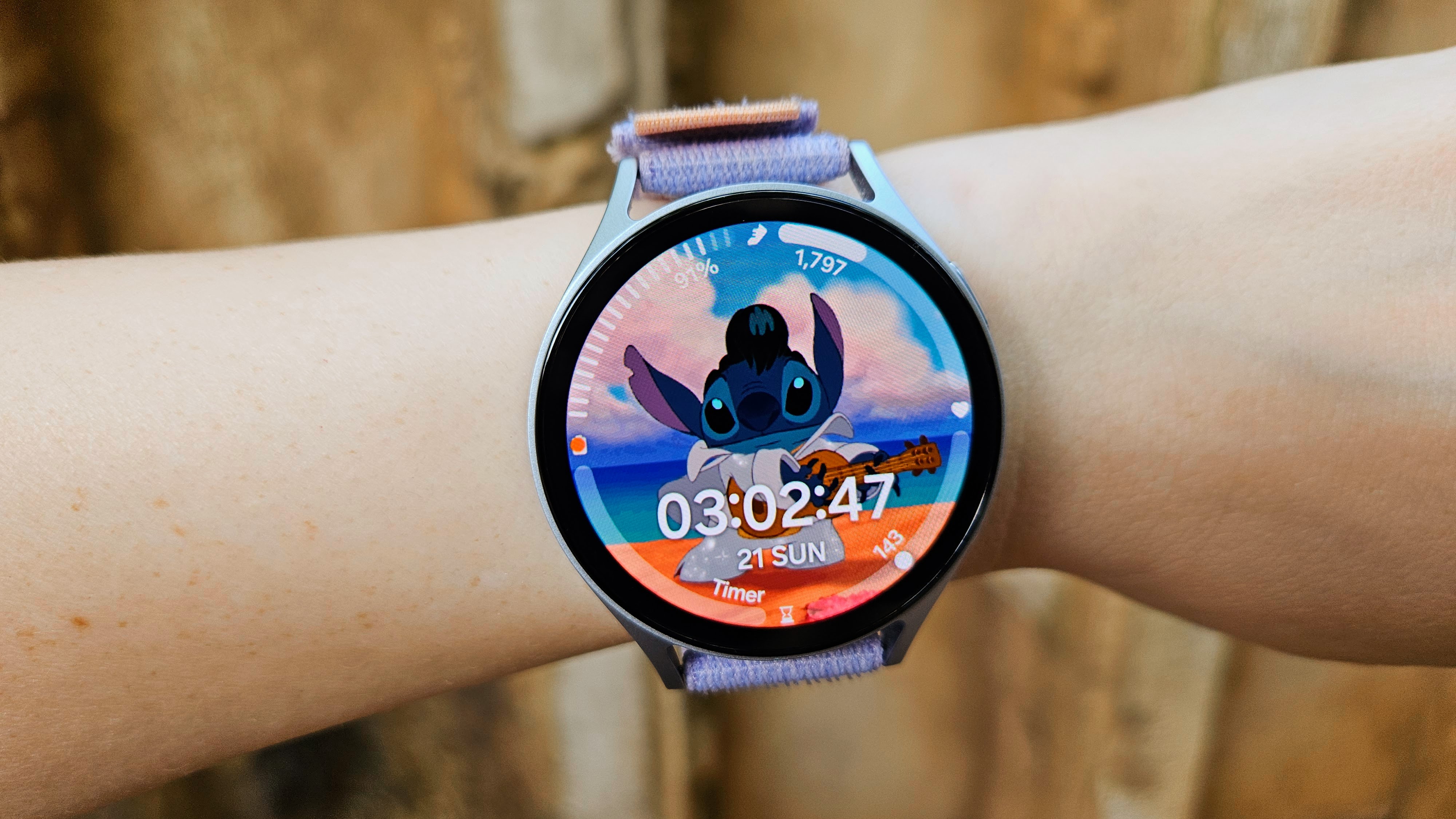
The main reasons to buy the Galaxy Watch 7 if you have a Watch 6 are the faster processor, more accurate health data, pinpointed GPS, and extra storage. Admittedly, the last three are more niche features that some users won't need, while the Exynos boost will pay off for future updates like AI tools that require more processing power.
If you have a Galaxy Watch 5 or 4, the differences are much more significant, and you have no reason to wait unless you want to hold out for the Galaxy Watch 8.
Leaks show that the Samsung will make a Galaxy Watch 8 and 8 Classic with fairly similar battery life to the last generation. Assuming it has the same Exynos W1000 chip, the Watch 8 may not be a massive change over the Watch 7.
In the end, the Galaxy Watch 7 tops our list of the best Android smartwatches available today. Unless the Google Pixel Watch 3 appeals to you, you won't find any other Wear OS watch that comes close when it comes to software support and useful features. And since the Watch 7 is frequently discounted these days, that makes it even more tempting.
Upgraded but consistent
The Samsung Galaxy Watch 7 has the fastest performance in an Android watch, packs in dual-band GPS and new heart rate sensors, and has the same bright, thin-bordered displays and reasonable price as the Watch 6. It's our top pick for the best Android smartwatch of the year.







